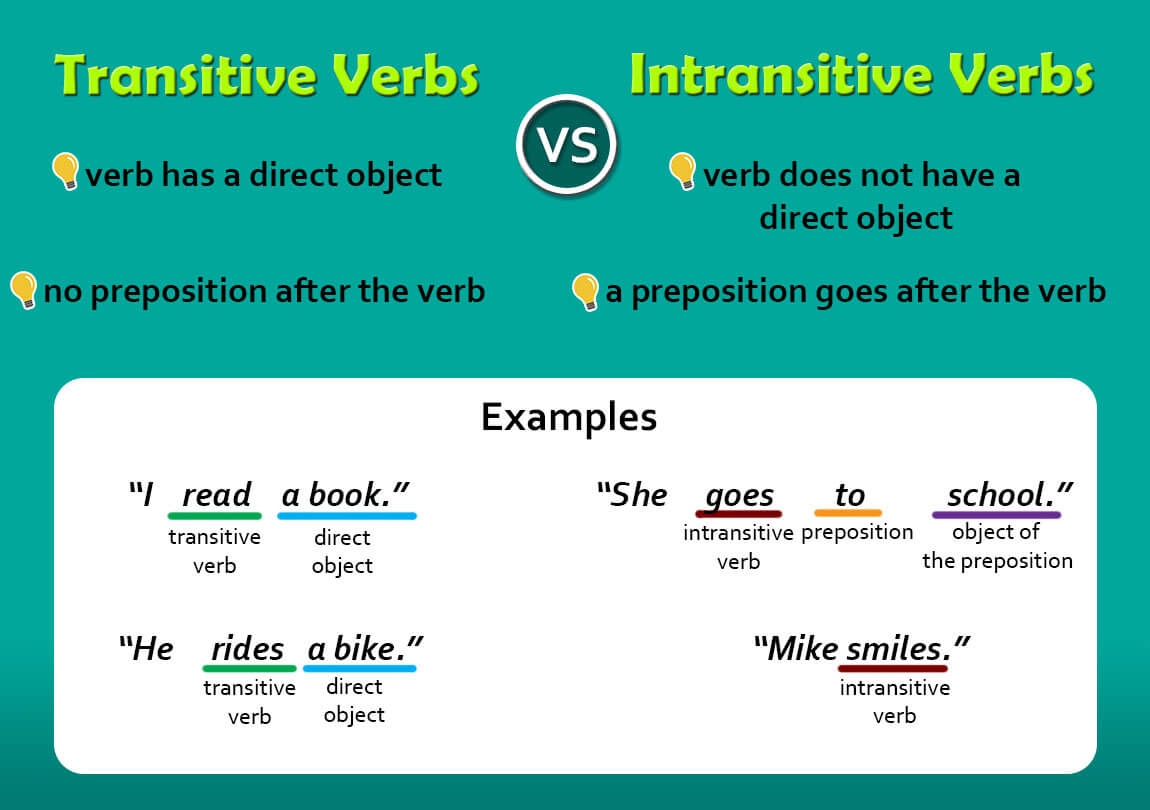Verbs are essential components of a sentence, as they express actions or states of being. Transitive and intransitive verbs are two important types of verbs that function differently in a sentence. Understanding the difference between these two types of verbs is crucial for mastering the English language.
Transitive and intransitive verbs are distinguished by the presence or absence of a direct object in a sentence. A transitive verb is a verb that requires a direct object to complete its meaning, while an intransitive verb does not require a direct object.
Definition
Transitive Verb: A transitive verb is a verb that requires a direct object to complete its meaning. In other words, it transfers the action of the subject to an object. For example, in the sentence “She ate an apple,” the verb “ate” is transitive because it requires an object (apple) to complete the action.
Intransitive Verb: An intransitive verb is a verb that does not require a direct object to complete its meaning. It expresses action or tells something about the subject without transferring the action to an object. For example, in the sentence “He sleeps peacefully,” the verb “sleeps” is intransitive because it does not require an object to complete the action.
Transitive verbs are often followed by a noun or pronoun that receives the action of the verb, while intransitive verbs do not have a direct object following them. Understanding whether a verb is transitive or intransitive is crucial for constructing grammatically correct sentences.
It is important to note that some verbs can function as both transitive and intransitive, depending on how they are used in a sentence. For example, the verb “run” can be transitive when followed by a direct object (e.g., “She ran a marathon”) or intransitive when used without a direct object (e.g., “He ran quickly”).
Mastering the distinction between transitive and intransitive verbs is essential for improving your writing and communication skills. By understanding how these verbs function in a sentence, you can create clear and concise sentences that effectively convey your message.
In conclusion, transitive and intransitive verbs play a crucial role in sentence structure and grammar. By recognizing the difference between these two types of verbs, you can enhance your understanding of the English language and improve your writing skills.
